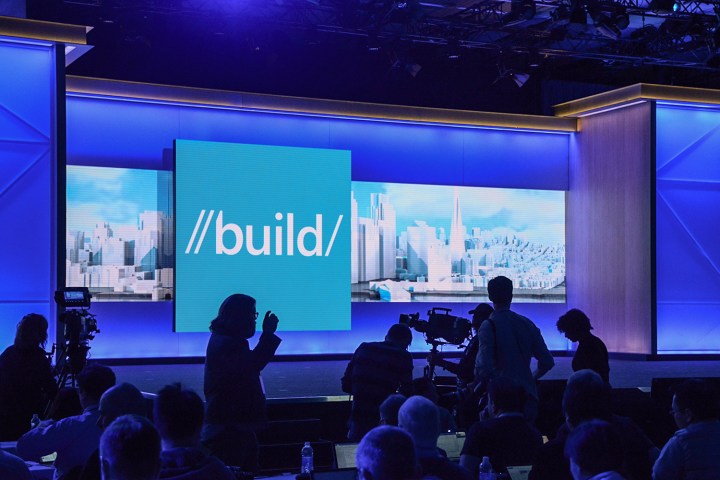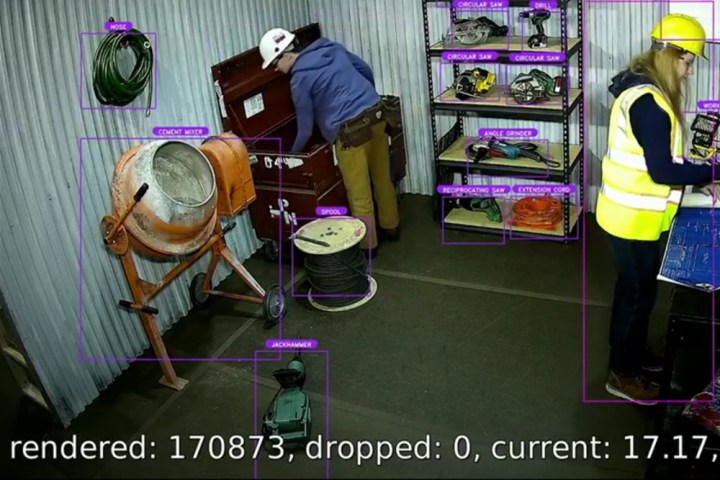
Some of the topics covered were detailed, highly technical, and of interest exclusively to developers. Some topics, however, did have more universal appeal, and here’s a roundup of what Microsoft covered that will have the greatest impact on the typical PC user.
Cortana

Microsoft is in a race against Amazon Alexa, Google Home, and Apple Siri when it comes to personal digital and home assistants. The company has made its Cortana Skills Kit available in preview, meaning that developers can start building skills into Cortana to make her more useful to a wider range of users. So far, out of 300 million people using Windows 10 on roughly 500 million devices, only 145 million are actually using Cortana — and that’s a number that Microsoft needs to improve if it wants to compete in this increasingly important space.
The company also spent some time on new Cortana-powered hardware. Not only was the Harman Kardon Invoke speaker highlighted throughout the event, but Microsoft also announced additional partnerships with HP and Intel on Cortana-powered devices to come.
One of the keynote’s more impressive demonstrations was given by senior product manager Laura Jones, who showed off some Cortana Skills that moved from the home to the car to the office. Cortana was able to recognize the context and respond appropriately, including providing a solid hands-off experience that should make driving while working a little less dangerous.
Visual Studio 2017 – Now available for the Mac

Microsoft’s most important developer toolset, Visual Studio 2017, was released for Windows in March 2017. As such, it was a central focus of the first keynote address and was featured in numerous demonstrations. Clearly, Microsoft sees Visual Studio 2017 as central to its commitment to helping developers create powerful — and lucrative — solutions around Microsoft’s most important products and services.
The most important announcement was likely the availability of Visual Studio 2017 for the Mac. Now, there’s one seamless development environment that can span the most important platforms. The new Mac version is just as feature-complete and powerful as its Windows counterpart, meaning that developers can now build apps on their Macs that utilize C#, F#, .Net Core, Asp.Net Core, Xamarin, and Unity. Even better, a developer who buys a license to one platform automatically receives a license for the other as well.
Cognitive services and the new Presentation Translator

Artificial intelligence (AI), machine learning, and bots are some of the most important technologies — and buzzwords — in the industry today. Everyone is investing heavily in making our machines smarter, and Microsoft is no exception. It should come as no surprise, then, that the company spent some serious time on outlining how all of its products and services make use of the Microsoft Bot Framework and Cognitive Services suite.
The Microsoft Bot Framework has been expanded, adding in “Adaptive Cards” that are available across apps and platforms. Skype for Business, Bing, and Cortana are just a few of the channels that can be leveraged, and more than 130,000 developers have signed on to use the technology.
A real-world application of Microsoft’s machine intelligence functionality was demonstrated in the new Presentation Translator. This new Office 365 feature uses Microsoft AI to translate in presentation captions between multiple languages in real-time. Anyone who’s attending a meeting can click on a link that will provide translated captions via the new AI-powered Presentation Generator.
Azure intelligent cloud

Microsoft’s Azure cloud computing platform is one of its fastest-growing businesses, and it’s a vital component of the company’s “cloud-first, mobile-first” productivity solutions strategy. As such, it received a fair amount of attention during the first keynote address. The company focused largely on explaining how Azure can interact with Internet of Things (IoT) devices to create a cloud that extends intelligence all the way to the cloud’s edge.
One demonstration showed how Swedish company Sandvik uses Azure and edge IoT devices to provide unparalleled insight into how well its various industrial devices are functioning. The demonstration showed just how powerful the combination of massive computing power, IoT devices, and powerful logic can be in allowing organizations to manage large numbers of remote devices.
AI for workplace safety

The second half of the keynote focused on Microsoft’s vision for artificial intelligence. Sataya Nadella once again took the stage, discussing broad concepts about how man will work with machines, not against them. Cortana, remote presence via Hololens, social bots, and Skype translate were listed as various examples of how Microsoft is making that vision a reality.
A demo showed how AI can be combined with mundane tools like video cameras to see and react to the world in remarkable ways. The specific context of the demonstration was improving workplace safety, by combining Azure Stack, Azure Functions, Cognitive Services, and cameras, to achieve 27 million image recognitions per second.
In the context of workplace safety, the system was impressive. Adding new employees was easy, given that the system was constantly photographing people who were detected on-site. An administrator needed only to select and identify a person and then fill out additional details.
Editors' Recommendations
- How to watch Microsoft’s Build 2021 keynote today
- How to watch the Microsoft Build 2019 keynote and what to expect


